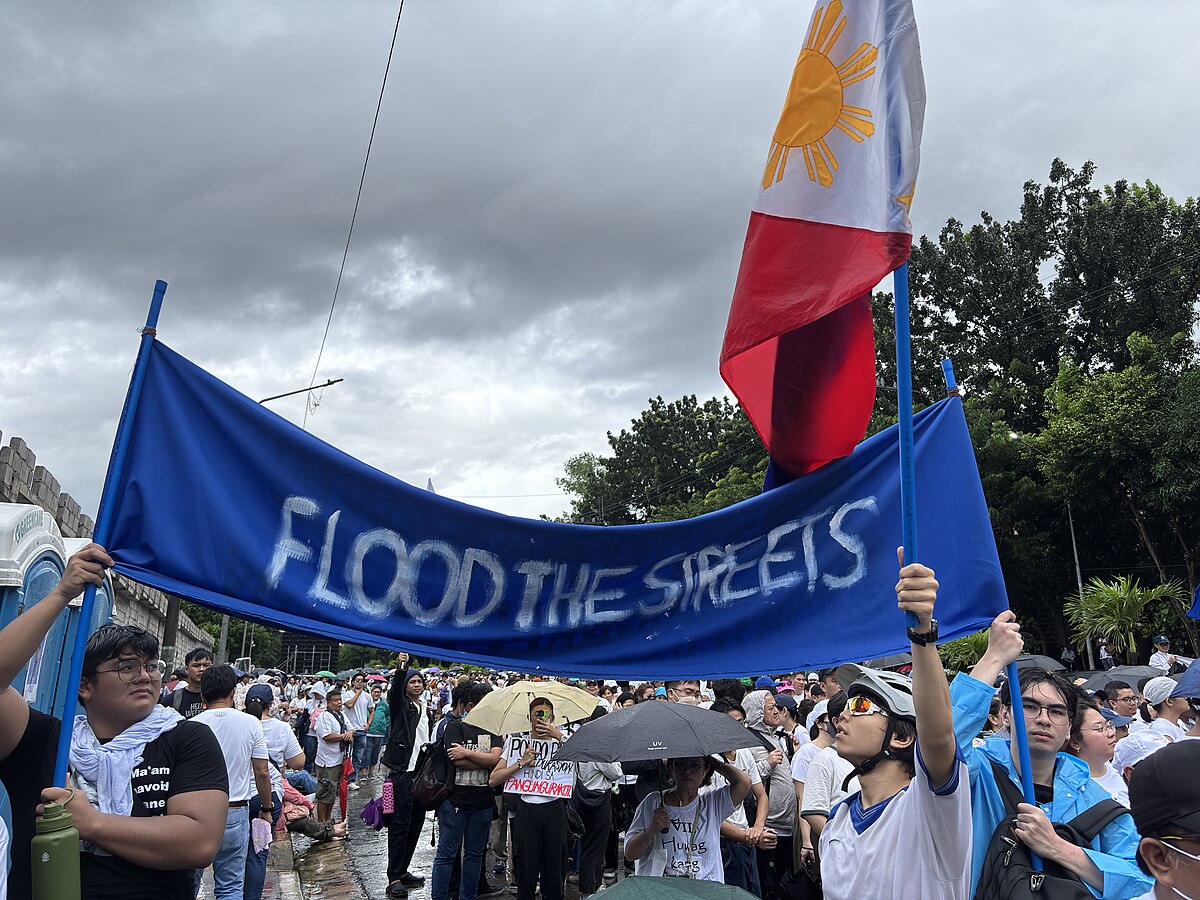Massive protests have erupted in the Philippines over systemic corruption and “ghost projects,” marking the country’s largest civic movement in a decade and exposing deep public frustration.

@RFNirmala/Creative Commons
It barely made a blip in international media, but the Philippines has been shaken by a wave of massive, unprecedented protests over the past few weeks. Tens of thousands of people have taken to the streets of Manila and other major cities, denouncing systemic corruption and decades of political betrayal. Analysts are already calling it the country’s most significant civic uprising in the last decade.
The trillion peso march
The movement reached its climax on September 21, when more than 100,000 people joined the so-called “Trillion Peso March” to denounce the murky handling of public funds and the explosive scandal of ghost flood-control projects — multimillion-dollar schemes that were supposed to protect communities from typhoons and monsoons but, as it turned out, existed only on paper. One trillion Philippine pesos is roughly $17 billion (₱1 trillion) — a figure that gives the protest its name and its fury.
Armed with banners and chants, demonstrators demanded radical change, transparency, and respect from a political class they see as rotten to the core. Their anger wasn’t just aimed at anonymous bureaucrats. “Nepo babies” — the sons and daughters of politicians and contractors involved in the scandal — became lightning rods for public outrage, flaunting their luxury lifestyles on social media with private jets, designer bags, and exotic vacations, while ordinary citizens waded through floods.
WATCH: A drone shot shows the "Trillion Peso March" protest against corruption at the People Power Monument in Quezon City around 4 p.m. on Sunday, September 21. | 🎥 Contributed video via Noy Morcoso, INQUIRER.net· Watch our special coverage here: https://inqnews.net/Anticorruptionrally· Follow our live updates at inqnews.net/liveprotestvscorruption
Posted by INQUIRER.net on Sunday, September 21, 2025
The choice of date was anything but accidental. September 21 marks the anniversary of the declaration of martial law by dictator Ferdinand Marcos Sr. in 1972 — a period remembered for brutal repression and runaway corruption. It was a deliberate echo of history, and one that landed hard. The protests ended with about 200 arrests, including 89 minors, but their message was unmistakable: the Filipino people — among the most climate-vulnerable in Asia — are done being ignored and mocked by those meant to protect them.
#KurakotManagot #BahaSaLuneta#TrillionPesoMarch
Posted by Rox on Sunday, September 21, 2025
Voices from the streets
To understand the depth of this collective anger, I spoke with a young woman from Batangas now living in Manila. Her testimony reflects a generational frustration that’s as sharp as it is weary — a sense that no matter what happens, power always circles back to the same hands.
We stand firm against the greed and corruption that is eating this country aliive! Tama na, sobra na!Trillion Peso March in Naga City.
Posted by Marc Sebastian on Wednesday, October 1, 2025
“I think Filipinos are simply tired of the government and the political class in general,” she says. “As we always say: paulit-ulit na lang (it’s always the same story). This time we’re asking for real change. It’s like watching a movie we’ve already seen and, unfortunately, we already know how it will end: nothing will ever change.”
The march itself was a true cross-section of society: ordinary citizens, students, workers, religious groups, and professionals. Even some senators — Bam Aquino, Kiko Pangilinan, Chel Diokno — spoke out publicly. Celebrities amplified the message online, making it harder for the government to brush the movement aside.
Now Happening ‼️ TRILLION PESO MARCH Naga City(Ateneo De Naga University grounds)As of 2:20PM#fypviralシ #TrillionPesoMarch #EndCorruption
Posted by Arjie Sto Domingo Villagracia on Tuesday, September 30, 2025
The ghost projects scandal
The tipping point came when President Ferdinand Marcos Jr. referenced the flood-control projects during his State of the Nation address, after weeks of deadly floods. He had visited one of the supposed construction sites, only to find absolutely nothing built, despite enormous budgets allocated. Soon, members of Congress backed his claims, and the story exploded. For years, huge chunks of public money had been earmarked to protect communities from floods — and yet, in many cases, not a single concrete wall had been laid.
“The sad part is that many government officials were involved,” the young woman explains. “Senators, members of Congress, mayors, entire departments like the DPWH — the system is full of holes. People had complained before about poor-quality projects, but this time it turned out some were marked as ‘completed’ when nothing was built at all. Entirely ghost projects. I just hope justice is served. That money came from citizens’ taxes. They deserve to see the promises fulfilled.”
Corruption as a way of life
Corruption in the Philippines isn’t new. It’s practically baked into daily life.
“Honestly, corruption has existed in the Philippines for as long as I can remember,” she says. “Maybe before it wasn’t as widespread, or maybe people just didn’t talk about it as much. The big difference now is that in the past, corrupt officials at least tried to hide it. Now they flaunt their luxury lifestyles openly, and their families do the same. And the sad part? We’ve started to see it as normal.”
Her voice hardens when I ask if this movement might be the beginning of real change.
“I’m not convinced yet. Like I said, it’s like watching a movie you’ve already seen — you know how it will end. Unless they go after the real masterminds, these endless investigations and hearings won’t lead to much.”
